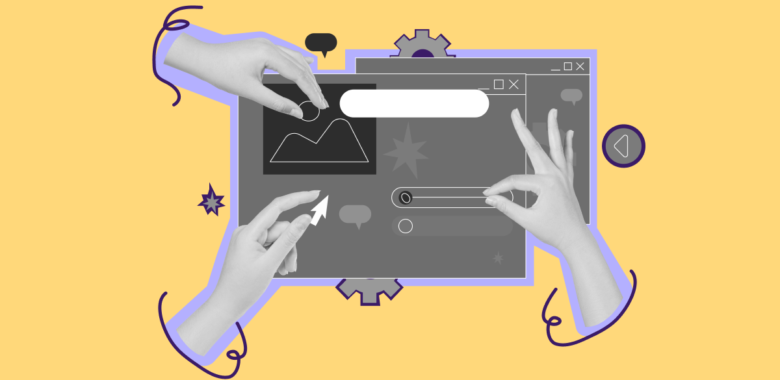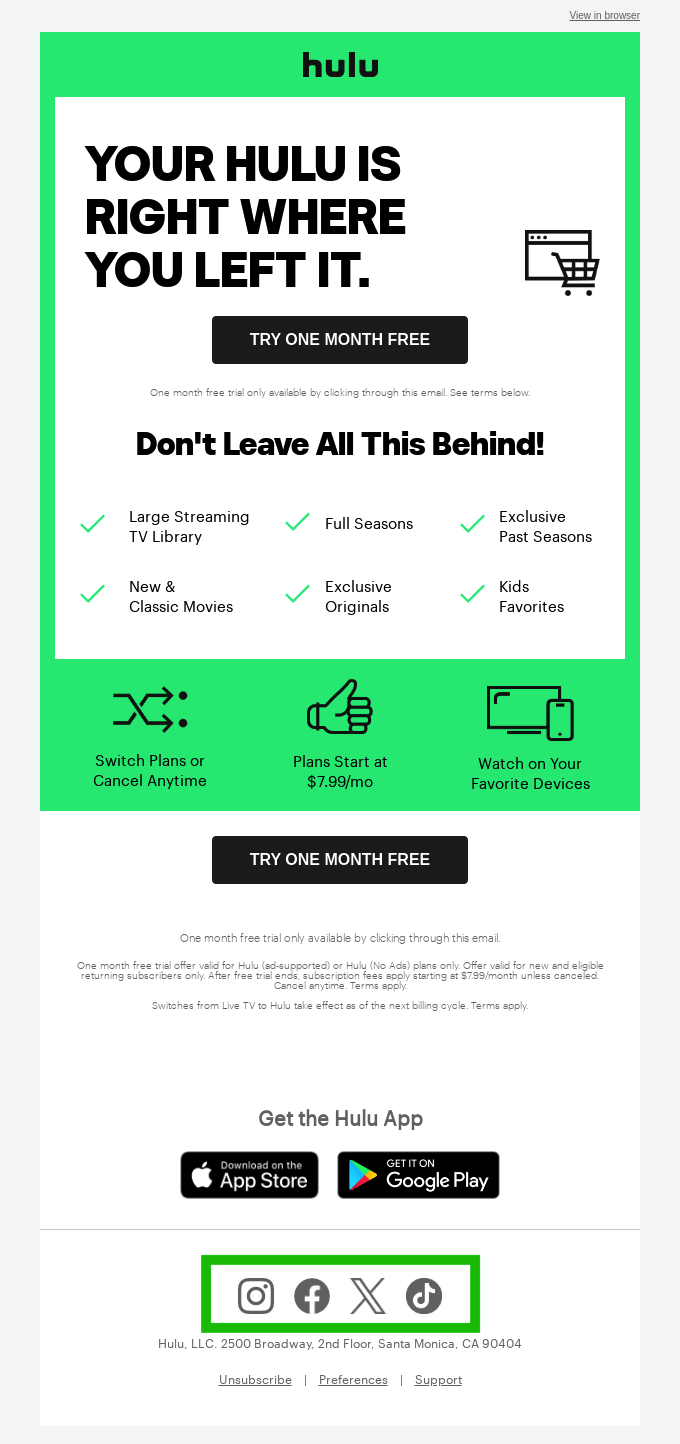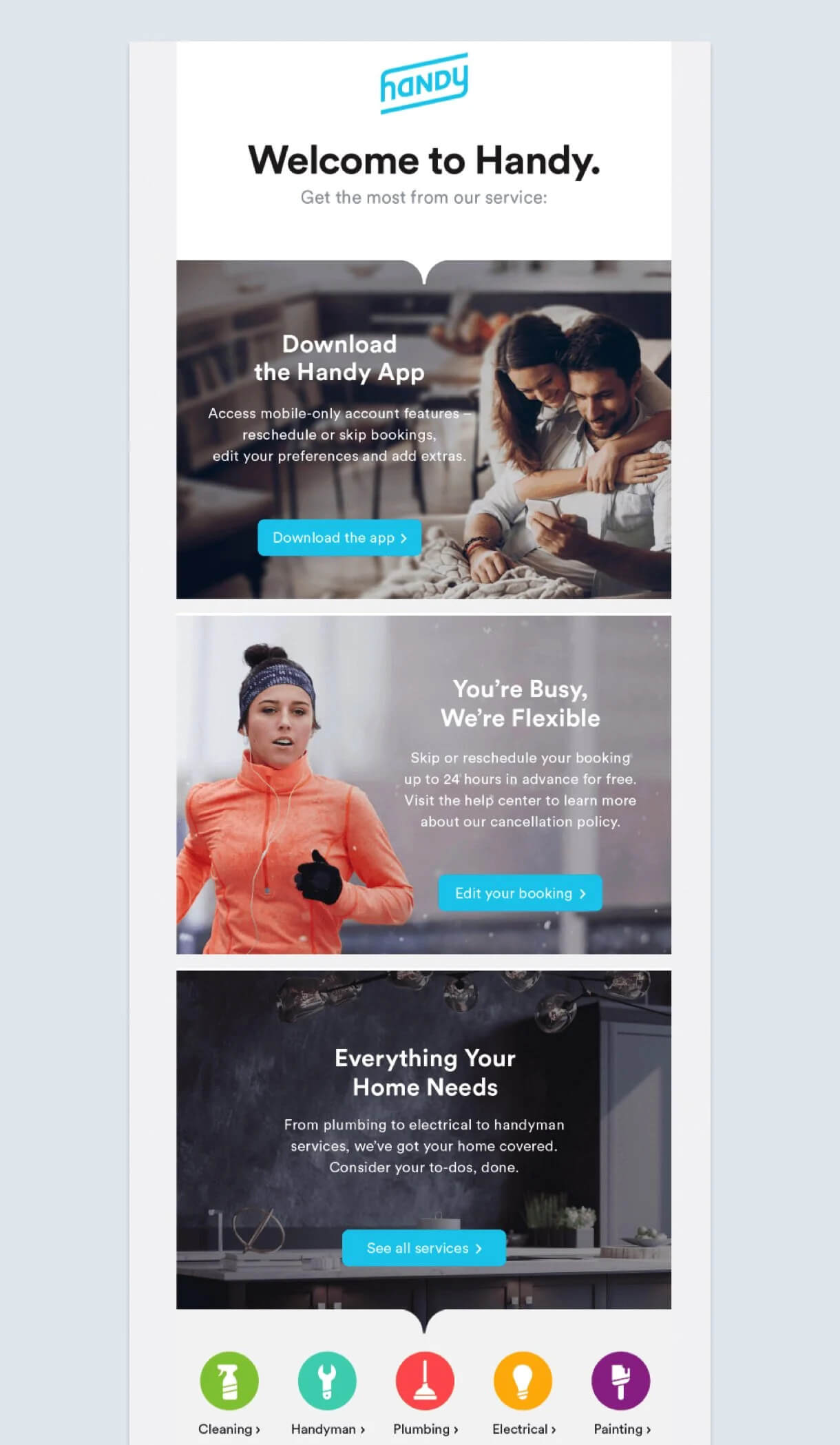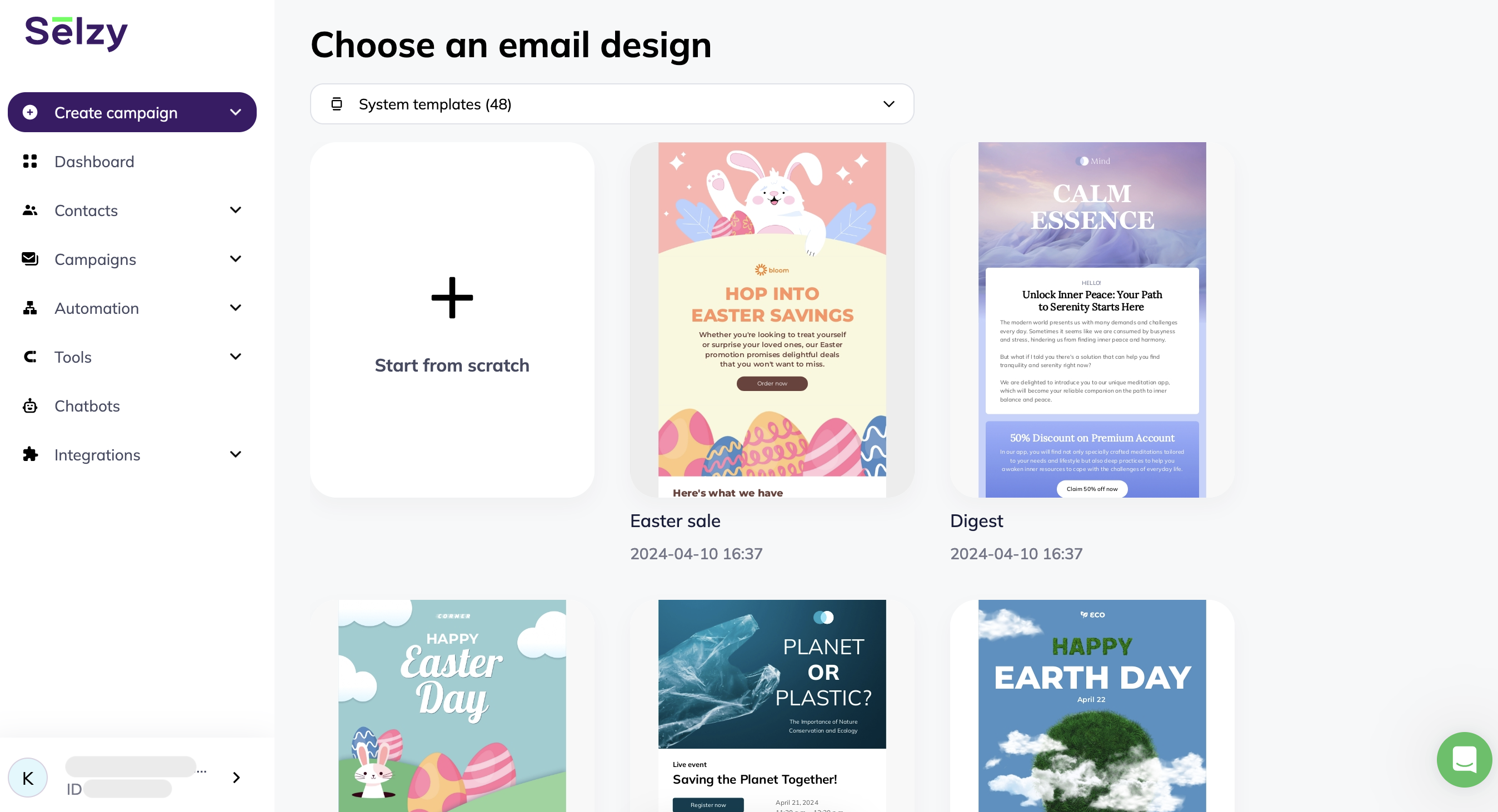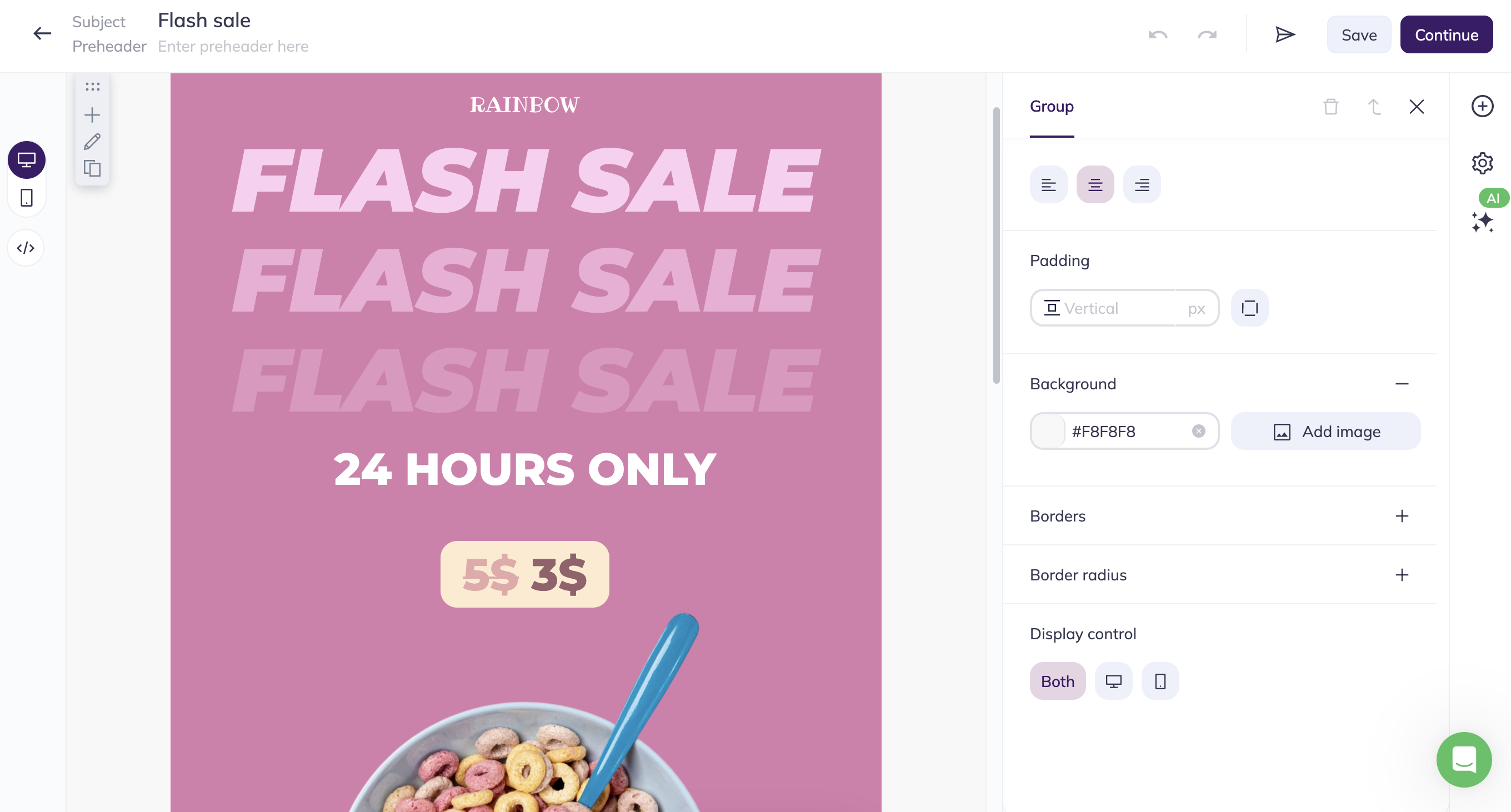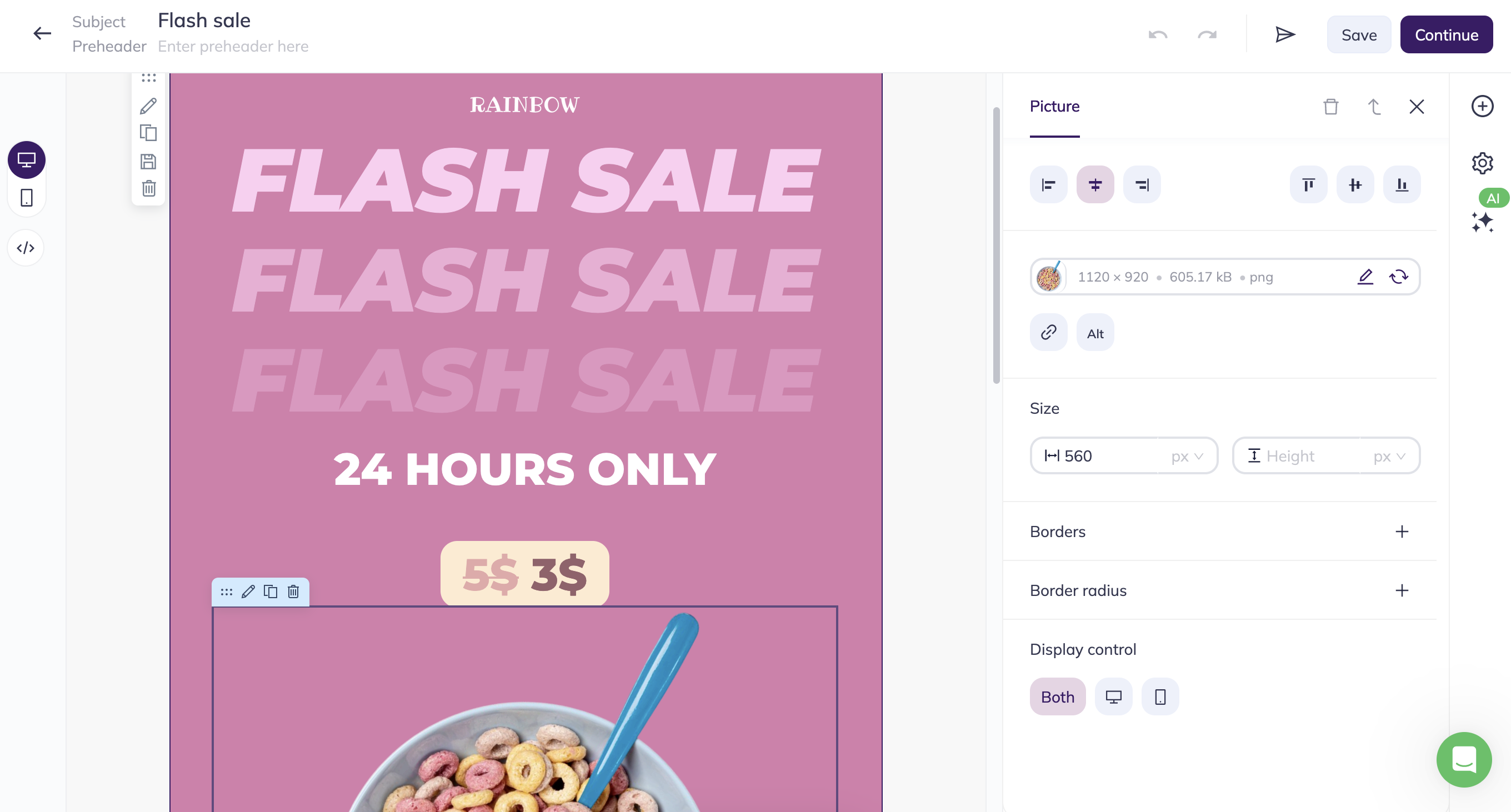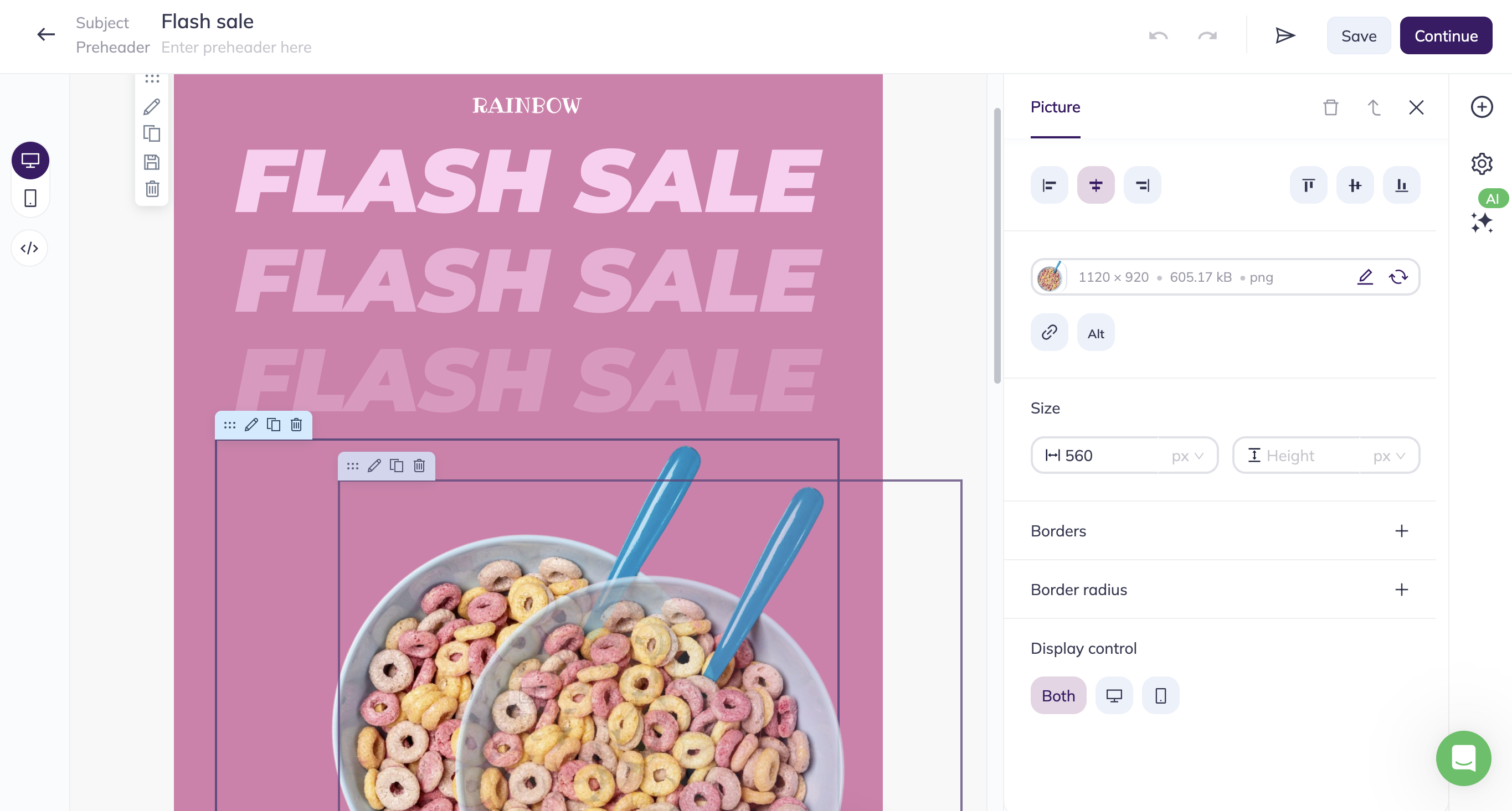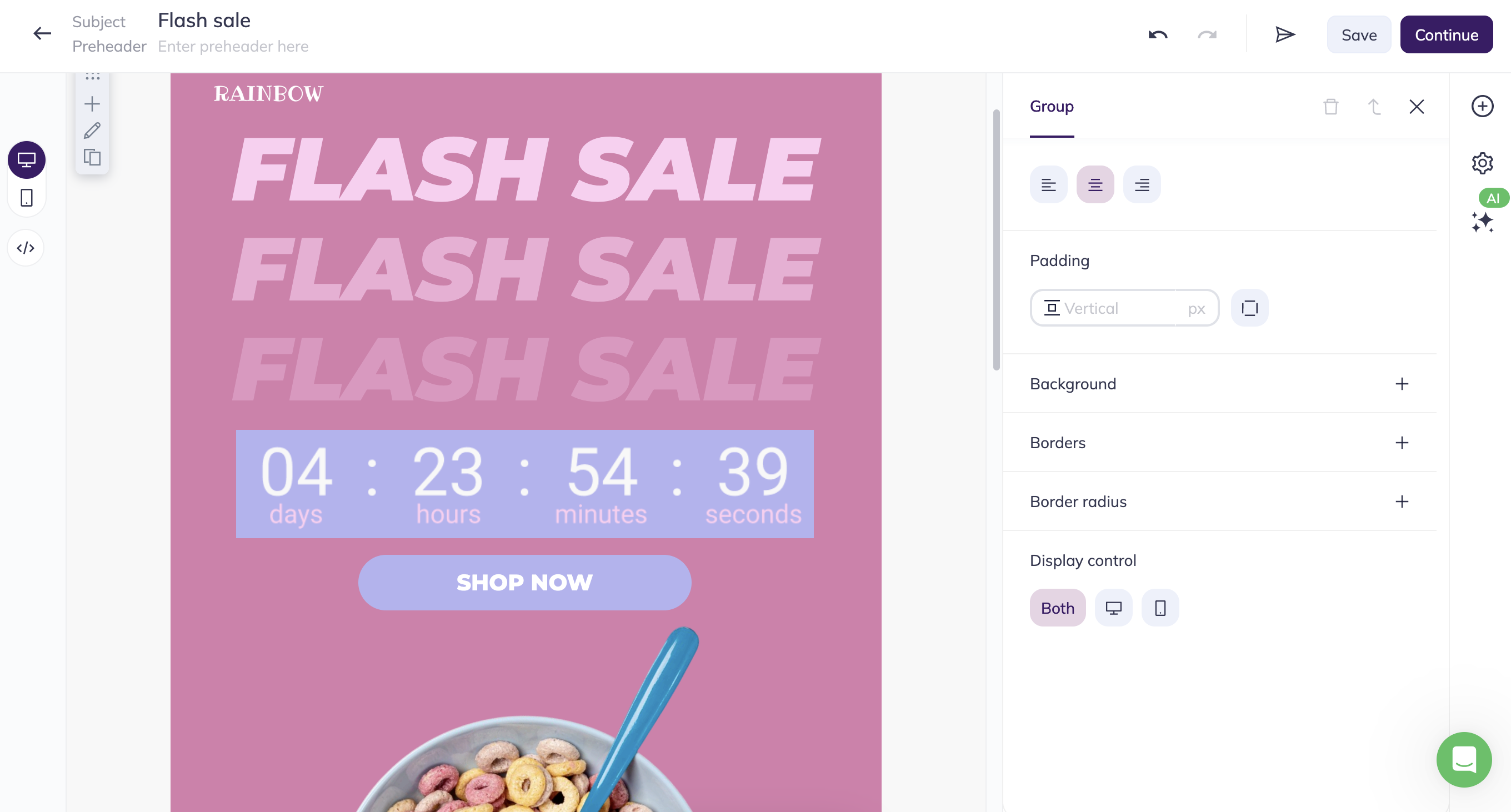What is email customization?
Email customization is the process of making a template unique by adding personal touches that reflect your company’s branding. Email service providers’ email builders usually offer a variety of templates that can be customized with drag-and-drop design tools or simple coding. This includes style elements like colors, fonts, images, logos, etc. But you can also adjust other features like the layout of text boxes and images according to the marketing goals of the campaign you plan on sending. For example, one way to introduce customers to a brand redesign is to place an old and a new logo side-by-side instead of one after the other. By customizing the design of your emails, you can make your email marketing campaign stand out from the rest, even if you don’t have a background in design and development.
Email template types
By using different templates, you can shake things up in your marketing emails. Many different types of email templates can be customized to fit your company’s branding and marketing goals. These might include:
- A content template that contains only text and provides space for a header, relevant call-to-action buttons, and logos.
- A gallery email. If you’re looking to display many images in your email, a gallery is the way to go.
- An email with a featured section. Useful to highlight something specific in the email. This template can be used for several sending purposes: it is the perfect choice for companies who want to market their products, make announcements, tell stories, or teach readers.
- A fixed column layout is ideal when you want to draw attention to specific data points or compare information side-by-side.
- A themed email layout that corresponds with special occasions or events. For example, you can design a Christmas-themed template to send to readers in December.
- A past email campaign. A tried and true template can be repurposed for future email marketing blasts.
All of these templates are great for different email marketing purposes and different campaigns.
